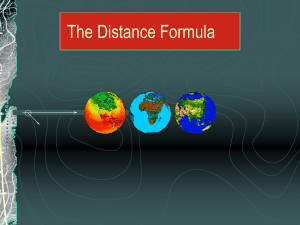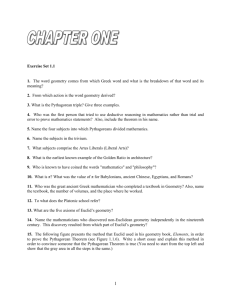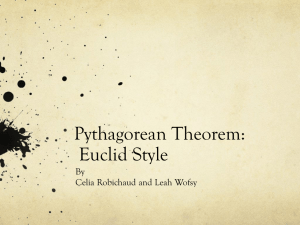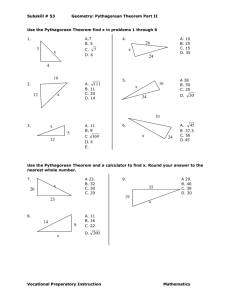What were we doing in 3C?
advertisement
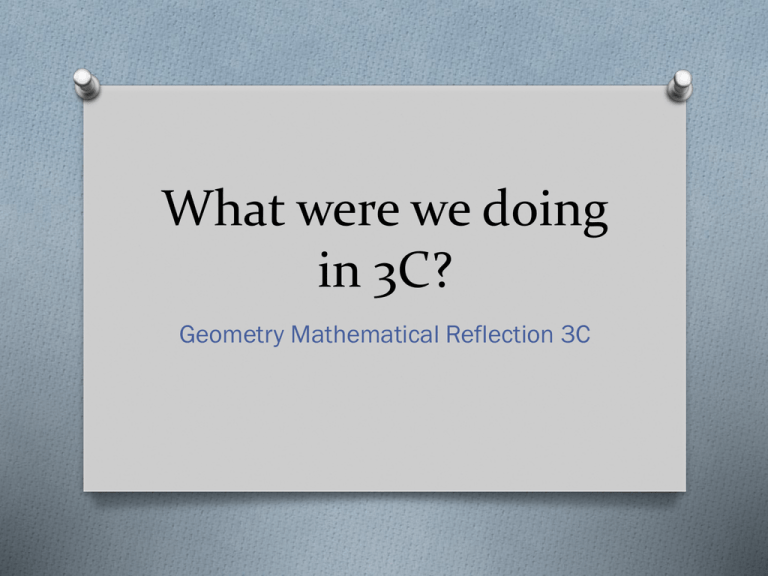
What were we doing in 3C? Geometry Mathematical Reflection 3C In this investigation, O You studied several dissect-and-rearrange proofs of the Pythagorean Theorem. O You applied the Pythagorean Theorem. Habits and Skills You developed these habits and skills: O Follow the logical reasoning and fill in missing steps in proofs. O Identify the critical features in a proof without words. O See where and how to use the Pythagorean Theorem to find missing lengths in figures. DHoM O Simplify the process O Visualize O Be critical Vocabulary and Notation O Pythagorean triple Big Idea Six proofs of the Pythagorean Theorem by O Euclid 1 O Indian mathematician O a Chinese person O Euclid 2 O Perigal O Garfield Euclid By Indian guy By Chinese guy Euclid 2 By Perigal By Garfield Discussion Question What is a proof without words? • Is a diagram that is clear enough and suggestive enough to allow a person to see the relationships that can be the basis of a formal proof. Discussion Question What does the Pythagorean Theorem say about triangles? • The Pythagorean Theorem states that the square of the length of the hypotenuse of a right triangle is equal to the sum of the squares of the other two sides Discussion Question What is a Pythagorean triple? • Is a set of three positive integers that satisfy the equation, 𝑎2 + 𝑏 2 = 𝑐 2 . • For example, (3, 4, 5), (6, 8, 10), (5, 12, 13), etc. Problem 1 State the Pythagorean Theorem in terms of… a. The side lengths b. Areas Problem 2 Find the length of a diagonal of a square that has a side length of 4 cm. Problem 3 What is the area of the parallelogram below? Problem 4 Find the height of an isosceles triangle with a base that is 120 cm long and congruent sides that are 100 cm long. Problem 5 Suppose you need to divide a rectangular pool into an area for adults to swim and an area for children to swim. How much rope would you need to divide the pool as shown? Are you ready for 3D? In 3D, you will learn how to O Find surface are of a solid using a net. O Interpret and use formulas for lateral and surface areas and for volume. O O Don’t forget HOMEWORK!!

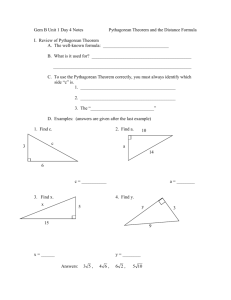
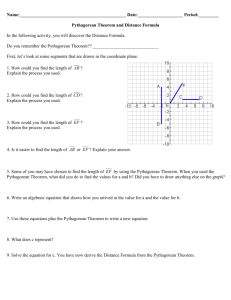
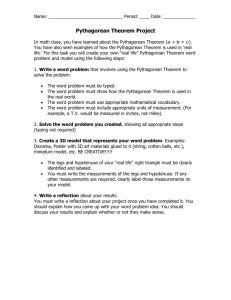

![Pythagorean Theorem Choice Menu]](http://s3.studylib.net/store/data/006637104_1-ef489d42c5b94dc2216093dd08d2b47e-300x300.png)
